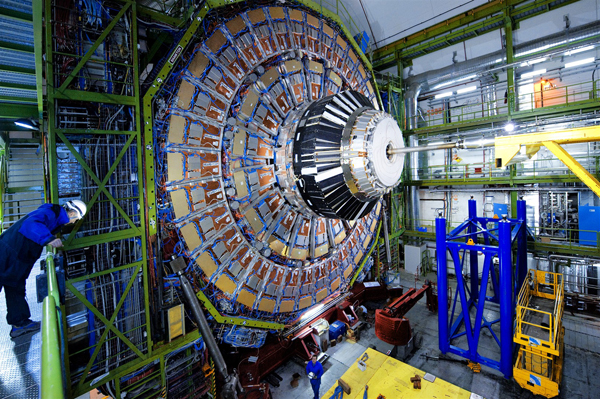
CMS published its 100th paper on 3rd August. This accomplishment, unprecedented in its pace, came as a result of many things working together extremely well.
Primarily, the performance of the LHC accelerator during the last two years was terrific. It exceeded all expectations by surpassing and, already, even doubling the luminosity goal for 2011. We expect that by the end of the 2011 run, the LHC will deliver close to five times the luminosity of the 2011 goal of 1 fb−1.
The superb performance of the LHC and, specifically, the CMS detector are primarily responsible for this milestone. By using a simulation program based on 30 years of physics, combined with our extensive use of test beams, we were able to understand the data almost as soon as they were produced. This, together with an enormous and well-coordinated analysis effort on many frontiers, manifested in the presentations of new preliminary results at the recent European Physical Society meeting in Grenoble, France. Many more new and updated analyses are expected at the International Lepton-Photon conference in Mumbai, India.
To reach 100 papers, the review and publishing process must work smoothly as well. Physicists officially communicate the results of their experiments by publishing them in refereed journals. The review process beyond the physics group, which is an integral part of the analysis effort, includes an analysis review committee, a collaboration-wide review and, finally, a publication committee review and final reading. These steps, though costly in time and person power, are essential for making every effort to guarantee a correct and well-presented result. The process also provides an opportunity for every member of the collaboration to contribute.
All CMS papers, of which many already have tens of citations, are accessible via the CERN document server. Out of the 100 papers that CMS published so far, 75 are from LHC collision data, 24 are from the cosmic-ray runs of late 2009 and one is the CMS detector paper.
This article was originally published in Fermilab Today.
— Submitted by Boaz Klima
- Log in to post comments

